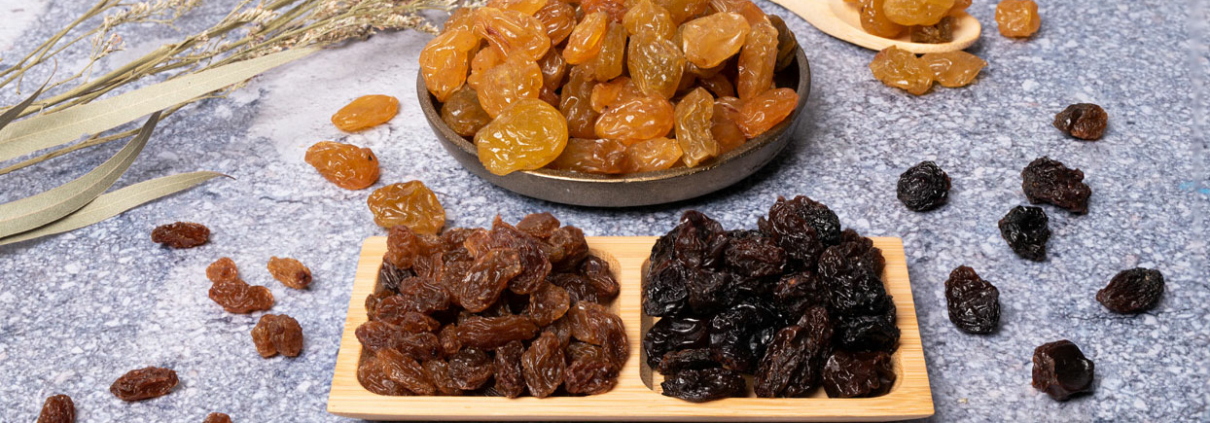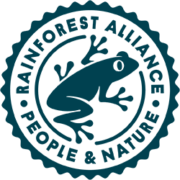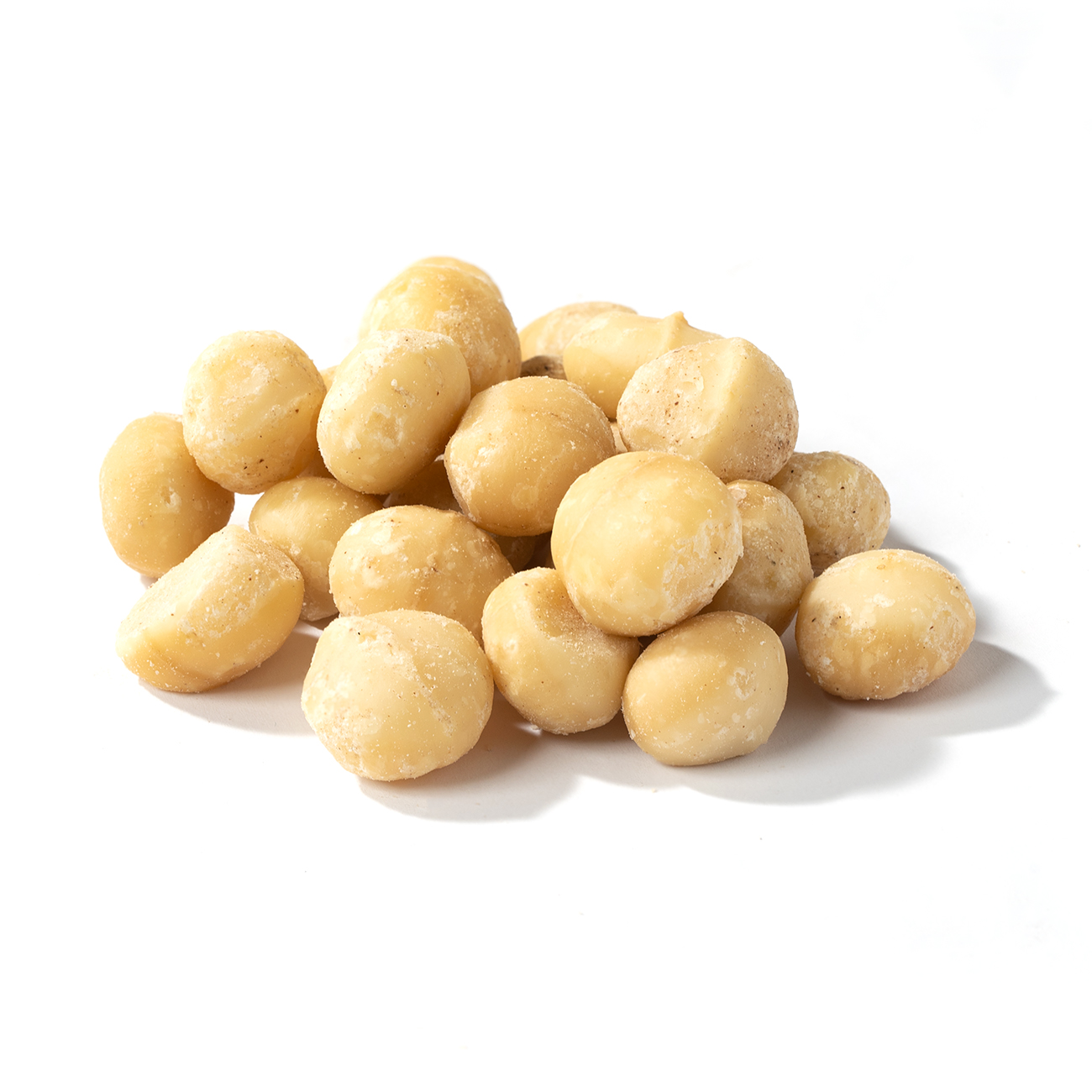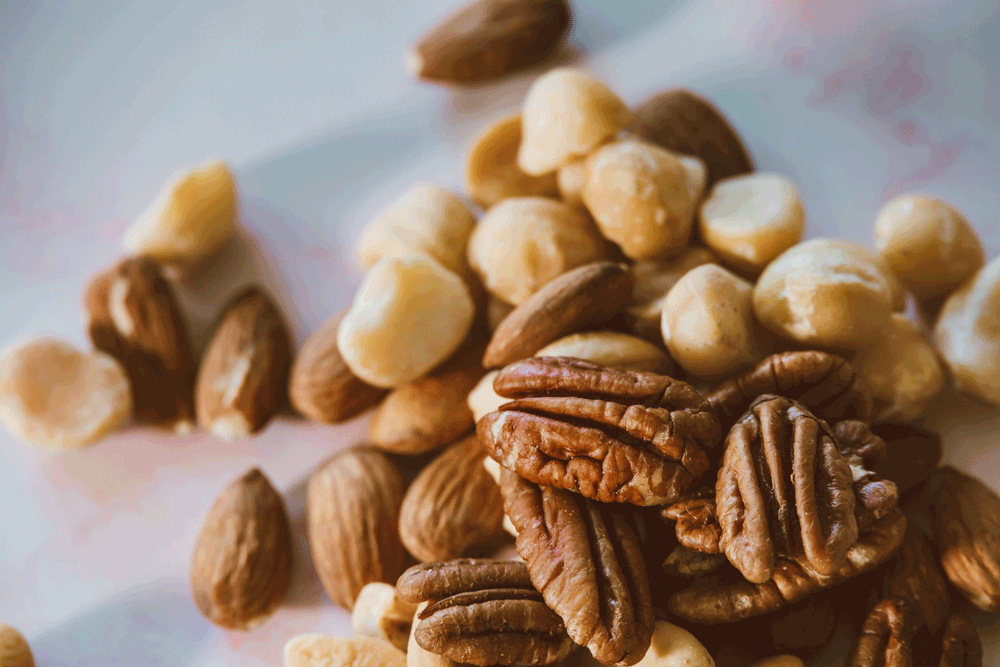Sultanas and currants
Sultanas
A sultana is a dried yellow grape. The vast majority of sultanas are made from the Sultana grape, a grape variety mainly native around the Mediterranean. It is an oval seedless grape variety. Worth noting: both yellow and blue sultanas are made from a yellow grape. The colour difference only occurs during the processing process.
Blue sultanas are made by picking the grapes and drying them. This shrinks the grape and gives it its dark colour. Yellow sultanas are soaked in ‘potash’, a mixture of salts, after picking. This helps the grape retain its light colour. After this, they are given a bath of sulphite and sulphur dioxide to preserve the sultana and prevent later browning.
The difference with currants?
Currants are made from a specific Greek grape, the Corinthian. Full of the: Vitis vinifera Korinthiaka. Although the grape is more like a berry. Dried currants are smaller, darker and more acidic than sultanas.
What does the nutrition centre say?
Sultanas and currants are dried fruit and that falls within the ‘Schijf van Vijf’. So you can give it to your child as a snack. Tip: Keep the portion small, as dried fruit contains quite a lot of sugar.
Vitamins and fibre
So although you can give a box or handful of sultanas as a snack, fresh fruit is still better. They contain more vitamin C, as vitamin C is lost when drying fruit. However, sultanas and other dried fruits still contain fibre. You can read what they contain on the label.
From what age can sultanas be given?
If your child eats breakfast, lunch and dinner around their first birthday, you can give an occasional snack like sultanas. Just make sure not to give too much. When his tummy is already filled with something else, your child will be less hungry at the next meal. A few sultanas are not harmful for a baby in the first snack stage, but it’s better to wait a while before giving them a snack.
Are unsulphured sultanas better than sulphurised ones?
No. Sulphurised sultanas are treated with a permitted preservative (sulphite). There is no reason not to use it. Even children can just eat sulphurised sultanas. There is 1 exception; some people can have hypersensitivity reactions to sulphite. This is most common among asthmatics. It is estimated that less than 4% of asthmatics are at risk of hypersensitivity reactions to sulphite.








